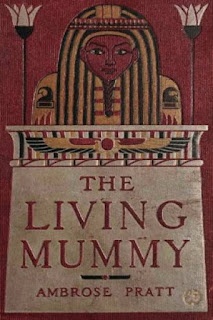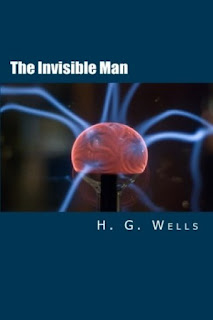The Mysteries of Udolpho, by
Ann Radcliffe, was published in four volumes on 8 May 1794 by G. G. and J. Robinson of London. The firm paid her £500 for the manuscript. The contract is housed at the University of Virginia Library. Her fourth and most popular novel,
The Mysteries of Udolpho follows the fortunes of Emily St. Aubert, who suffers, among other misadventures, the death of her father, supernatural terrors in a gloomy castle and the machinations of an Italian brigand. Often cited as the archetypal Gothic novel,
The Mysteries of Udolpho, along with Radcliffe's novel
The Romance of the Forest, plays a prominent role in Jane Austen's novel
Northanger Abbey, in which an impressionable young woman, after reading Radcliffe's novel, comes to see her friends and acquaintances as Gothic villains and victims with amusing results.
The Mysteries of Udolpho is a quintessential
Gothic romance, replete with incidents of physical and psychological terror; remote, crumbling castles; seemingly supernatural events; a brooding, scheming villain; and a persecuted heroine.
Modern editors point out that only about one-third of the novel is set in the eponymous Gothic castle, and that the tone and style vary markedly between sections of the work. Radcliffe also added extensive descriptions of exotic landscapes in the Pyrenees and Apennines, and of Venice, none of which she had visited
[3] and for details of which she relied on contemporary travel books, leading to the introduction of several anachronisms. Set in 1584 in southern France and northern Italy, the novel focuses on the plight of Emily St. Aubert, a young French woman who is orphaned after the death of her father. Emily suffers imprisonment in the castle Udolpho at the hands of Signor Montoni, an Italian brigand who has married her aunt and guardian Madame Cheron. Emily's romance with the dashing Valancourt is frustrated by Montoni and others. Emily also investigates the mysterious relationship between her father and the Marchioness de Villeroi, and its connection to the castle at Udolpho.
Emily St. Aubert is the only child of a landed rural family whose fortunes are now in decline. Emily and her father share an especially close bond, due to their shared appreciation for nature. After her mother's death from a serious illness, Emily and her father grow even closer. She accompanies him on a journey from their native Gascony, through the Pyrenees to the Mediterranean coast of Roussillon, over many mountainous landscapes. During the journey, they encounter Valancourt, a handsome man who also feels an almost mystical kinship with the natural world. Emily and Valancourt quickly fall in love.
Emily's father succumbs to a long illness. Emily, now orphaned, is forced by his wishes to live with her aunt, Madame Cheron, who shares none of Emily's interests and shows little affection to her. Her aunt marries Montoni, a dubious nobleman from Italy. He wants his friend Count Morano to become Emily's husband and tries to force her to marry him. After discovering that Morano is nearly ruined, Montoni brings Emily and her aunt to his remote castle of Udolpho.
Emily fears to have lost Valancourt forever. Morano searches for Emily and tries to carry her off secretly from Udolpho. Emily refuses to join him because her heart still belongs to Valancourt. Morano's attempt to escape is discovered by Montoni, who wounds the Count and chases him away. In the following months, Montoni threatens his wife with violence to force her to sign over her properties in Toulouse, which would otherwise go to Emily upon his wife's death. Without resigning her estate, Madame Cheron dies of a severe illness caused by her husband's harshness.
Many frightening but coincidental events happen within the castle, but Emily is able to flee from it with the help of her secret admirer Du Pont, who was a prisoner at Udolpho, and the servants Annette and Ludovico. Returning to the estate of her aunt, Emily learns that Valancourt went to Paris and lost his wealth. In the end, she takes control of the property and is reunited with Valancourt.
Radcliffe was born Ann Ward in Holborn, London, on 9 July 1764. Her father was William Ward (1737–1798), a haberdasher, who moved the family to Bath to manage a china shop in 1772. Her mother was Ann Oates (1726–1800) of Chesterfield.
[2] Radcliffe occasionally lived with her Uncle, Thomas Bentley, in Chelsea, who was in partnership with a fellow Unitarian, Josiah Wedgwood, maker of the famous Wedgwood china. Sukey, Wedgwood's daughter, also stayed in Chelsea and is Radcliffe's only known childhood companion. Sukey later married Dr Robert Darwin and had a son, Charles Darwin. Although mixing in some distinguished circles, Radcliffe seems to have made little impression in this society and was described by Wedgwood as "Bentley's shy niece".
In 1787, she married the Oxford graduate and journalist William Radcliffe (1763–1830), part-owner and editor of the English Chronicle. He often came home late, and to occupy her time she began to write and to read her work to him when he returned. Theirs was a childless but seemingly happy marriage. Radcliffe called him her "nearest relative and friend". The money she earned from her novels later allowed them to travel together, along with their dog, Chance. In her final years, Radcliffe retreated from public life and was rumoured to have become insane as a result of her writing.
Ann died on 7 February 1823 and was buried in a vault in the Chapel of Ease at St George's, Hanover Square, London. Although she had suffered from asthma for twelve years previously, her modern biographer, Rictor Norton, cites the description given by her physician, Dr Scudamore, of how "a new inflammation seized the membranes of the brain," which led to "violent symptoms" and argues that they suggest a "bronchial infection, leading to pneumonia, high fever, delirium and death."
There are few artefacts or manuscripts that give insight into Radcliffe's personal life, but in 2014 a rare letter from Radcliffe to her mother-in-law was found in an archive at the British Library. Its tone suggests a strained relationship between the two, which may have inspired the relationshop between Ellena Rosalba and the Marchesa di Vivaldi in her novel The Italian.
Little is known of Ann Radcliffe's life. In 1823, the year of her death, the Edinburgh Review said, "She never appeared in public, nor mingled in private society, but kept herself apart, like the sweet bird that sings its solitary notes, shrouded and unseen." Christina Rossetti attempted to write a biography of her, but abandoned it for lack of information.
According to Ruth Facer, "Physically, she was said to be 'exquisitely proportioned' – quite short, complexion beautiful – 'as was her whole countenance, especially her eyes, eyebrows and mouth.'"
Radcliffe published five novels during her lifetime, which she always referred to as "romances"; a final novel,
Gaston de Blondeville was published posthumously in 1826. She also published a travel narrative of her European travels,
A Journey Made in the Summer of 1794, through Holland and the Western Frontier of Germany, in 1795. At a time when the average amount earned by an author for a manuscript was £10, her publishers, G. G. and J. Robinson, bought the copyright for
The Mysteries of Udolpho (1794) for £500, while Cadell and Davies paid £800 for
The Italian (1797), making Radcliffe the highest-paid professional writer of the 1790s.
[1]
Jane Austen parodied
The Mysteries of Udolpho in
Northanger Abbey. Radcliffe did not like the direction in which Gothic literature was heading – one of her later novels,
The Italian, was written in response to Matthew Gregory Lewis's
The Monk. Radcliffe portrayed her female characters as equal to male characters, allowing them to dominate and overtake the typically powerful male villains and heroes, creating new roles for women in literature previously not available. It is assumed that this frustration is what caused Radcliffe to cease writing. After Radcliffe's death, her husband released her unfinished essay "On the Supernatural in Poetry", which details the difference between the sensation of
terror her works aimed to achieve and the
horror Lewis sought to evoke. Radcliffe stated that terror aims to stimulate readers through imagination and perceived evils while horror closes them off through fear and physical danger.
] "Terror and Horror are so far opposite, that the first expands the soul and awakens the faculties to a high degree of life; the other contracts, freezes and nearly annihilates them."
Radcliffe's fiction is marked by seemingly supernatural events that are then provided with rational explanations. Some modern critics have been frustrated by her work, as she fails to include "real ghosts". This could be motivated by the idea that works in the Romantic period, from the late 18th century to the mid-19th century, had to undermine Enlightenment values such as rationalism and realism. Throughout her work, traditional moral values are asserted, the rights of women are advocated, and reason prevails
Ann Radcliffe's works are traditionally regarded as anti-Catholic. She was seen as one of the Gothic authors that brought this prejudice more into the public eye of Anglican England. Her works, especially The Italian, often have Catholic ideas presented in a negative light, including prejudices in the Inquisition, negative depictions of convents and nuns, monks as villains, and ruined abbeys. The confessional is often portrayed as a danger zone controlled by the power of the priest and the church. The Italian and The Mysteries of Udolpho are both set in Italy, a land historically predisposed towards Catholicism and against Protestantism. Radcliffe's works would have left her contemporary readers with an impression of Catholicism as something ultimately cruel and corrupt, and of the author as alienated from the denomination and its practitioners.
This connection to anti-Catholicism has been suggested to be at least partially in response to the Catholic Relief Act of 1791, allowing Catholics to practice law, open Catholic schools, and exercise their religion.
Some think she was ultimately ambivalent toward Catholicism and more of a Latitudinarian Anglican, or even Unitarian.
Radcliffe's elaborate descriptions of landscape were influenced by the painters Claude Lorrain and Salvator Rosa. She often wrote about places she had never visited. Lorrain's influence can be seen through Radcliffe's picturesque, romantic descriptions, as seen in the first volume of The Mysteries of Udolpho. Rosa's influence can be seen through dark landscapes and elements of the Gothic.
Radcliffe said of Lorrain:
In a shaded corner, near the chimney, a most exquisite Claude, an evening view, perhaps over the Campagna of Rome. The sight of this picture imparted much of the luxurious repose and satisfaction, which we derive from contemplating the finest scenes of nature. Here was the poet, as well as the painter, touching the imagination, and making you see more than the picture contained. You saw the real light of the sun, you breathed the air of the country, you felt all the circumstances of a luxurious climate on the most serene and beautiful landscape; and the mind thus softened, you almost fancied you hear Italian music in the air.









